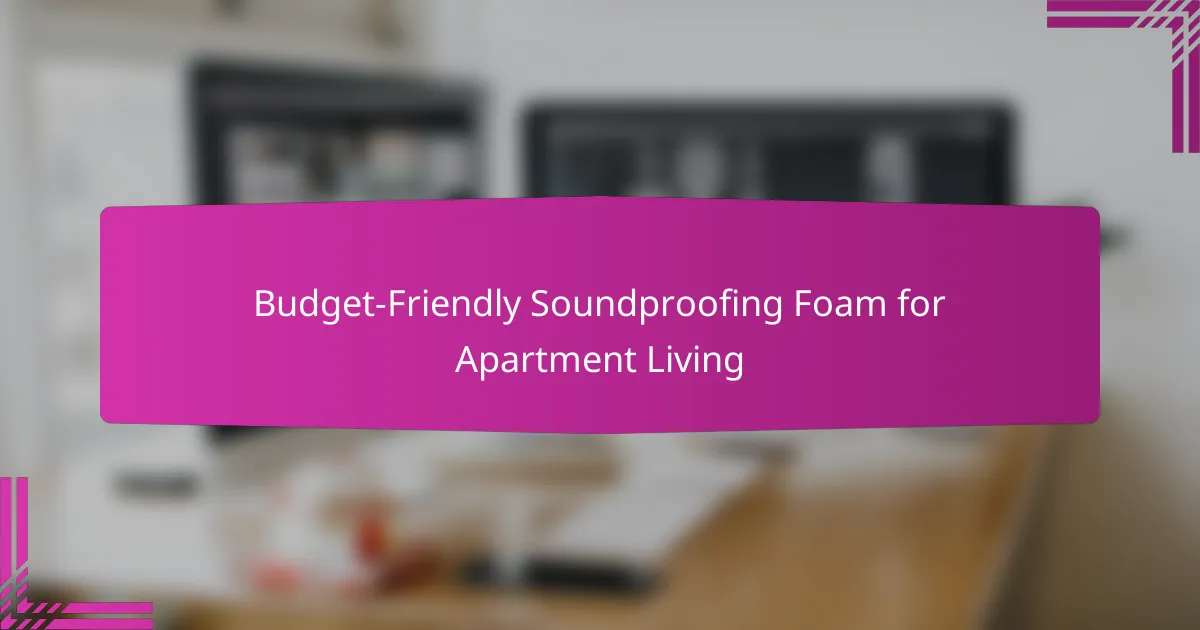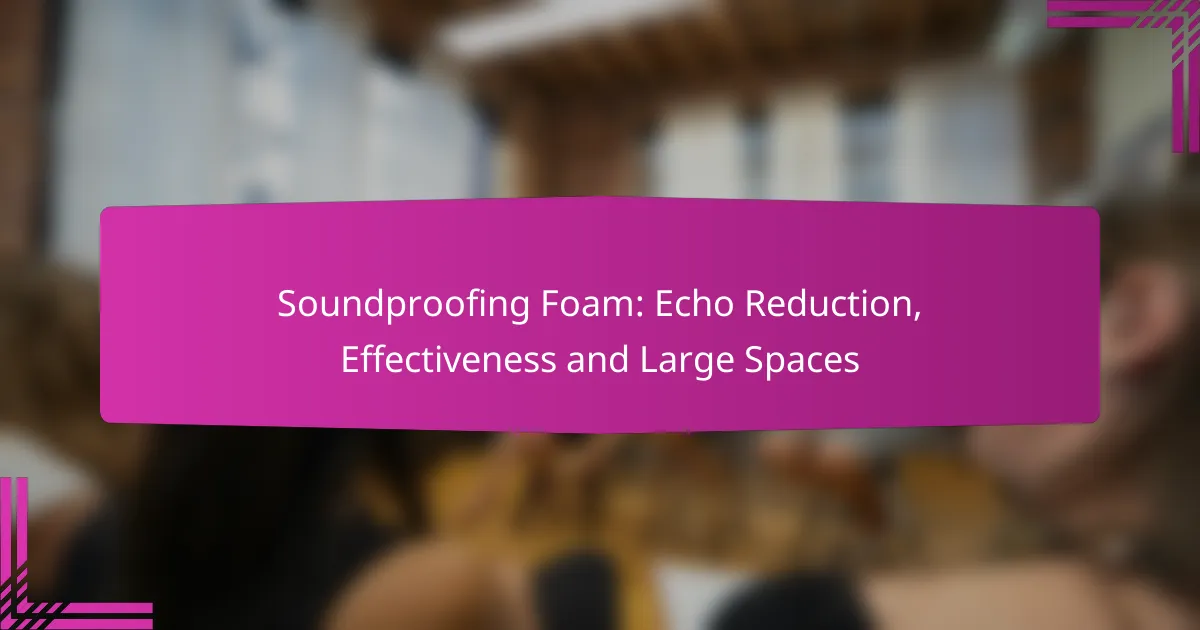Living in an apartment often comes with the challenge of noise from neighbors and the outside world. Budget-friendly soundproofing foam can be an effective solution, absorbing sound waves and significantly reducing unwanted noise. By choosing the right products based on density, thickness, and installation, you can create a quieter living space without overspending.

What are the best budget-friendly soundproofing foam options for apartments?
For apartment living, effective and affordable soundproofing foam options include products that absorb sound and reduce noise transfer between rooms. The best choices combine cost-effectiveness with performance, ensuring a quieter environment without breaking the bank.
Auralex Acoustics Studiofoam Panels
Auralex Acoustics Studiofoam Panels are a popular choice for soundproofing due to their high-density foam that effectively absorbs sound waves. These panels are available in various thicknesses, typically ranging from 1 to 4 inches, allowing for customization based on your specific needs.
Installation is straightforward, as they can be mounted using adhesive or brackets. Consider covering key areas such as walls and ceilings to maximize sound absorption, especially in shared living spaces.
Foam Factory Soundproofing Foam
Foam Factory offers a variety of soundproofing foam products, including wedge and pyramid-shaped panels that enhance sound absorption. Their foam is designed to reduce echo and improve acoustics in any room, making it ideal for apartments where noise can be an issue.
These panels are lightweight and easy to install, often requiring only adhesive spray. When selecting Foam Factory products, look for options that fit your aesthetic preferences and soundproofing goals.
Soundproof Cow Acoustic Foam
Soundproof Cow Acoustic Foam provides effective sound absorption with a range of products, including bass traps and acoustic panels. Their foam is designed to reduce noise pollution and improve sound quality, making it suitable for both residential and commercial spaces.
When using Soundproof Cow products, consider the layout of your apartment. Placing panels strategically in corners and on walls can significantly enhance their effectiveness. Additionally, their products are available in various colors, allowing you to maintain your decor while soundproofing.
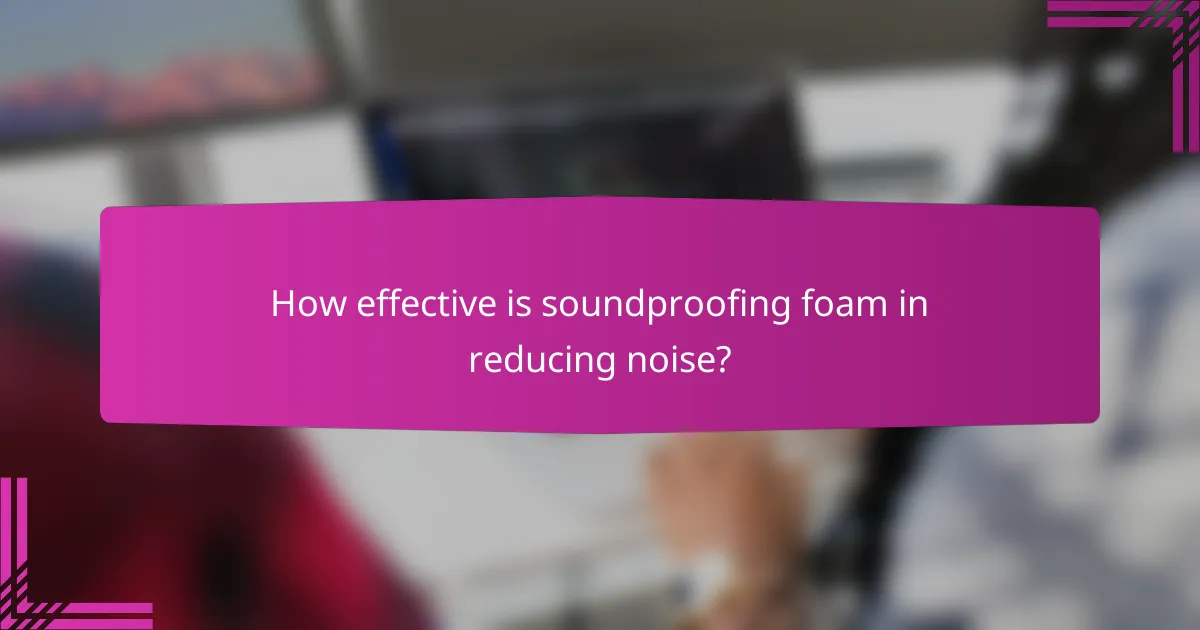
How effective is soundproofing foam in reducing noise?
Soundproofing foam is effective at reducing noise by absorbing sound waves, which helps to create a quieter living environment. While it may not completely eliminate noise, it significantly lowers the volume of unwanted sounds, making it a practical solution for apartment living.
Reduces echo and reverberation
Soundproofing foam is particularly effective in reducing echo and reverberation within a room. By lining walls and ceilings with foam panels, sound waves are absorbed rather than reflected, which minimizes the bouncing effect that can make spaces feel noisy and chaotic.
For best results, consider using foam in areas with hard surfaces, such as tiled or wooden floors, where sound tends to bounce more. Placing foam strategically in corners and on walls can enhance its effectiveness in controlling sound reflections.
Minimizes external noise intrusion
In addition to controlling internal sound, soundproofing foam helps to minimize external noise intrusion from outside sources like traffic or neighbors. While it may not block all noise, it can significantly reduce the level of sound that enters your apartment.
To maximize noise reduction, combine foam with other soundproofing methods, such as sealing gaps around windows and doors. This layered approach can help create a more peaceful living space, especially in urban environments where noise levels are typically higher.
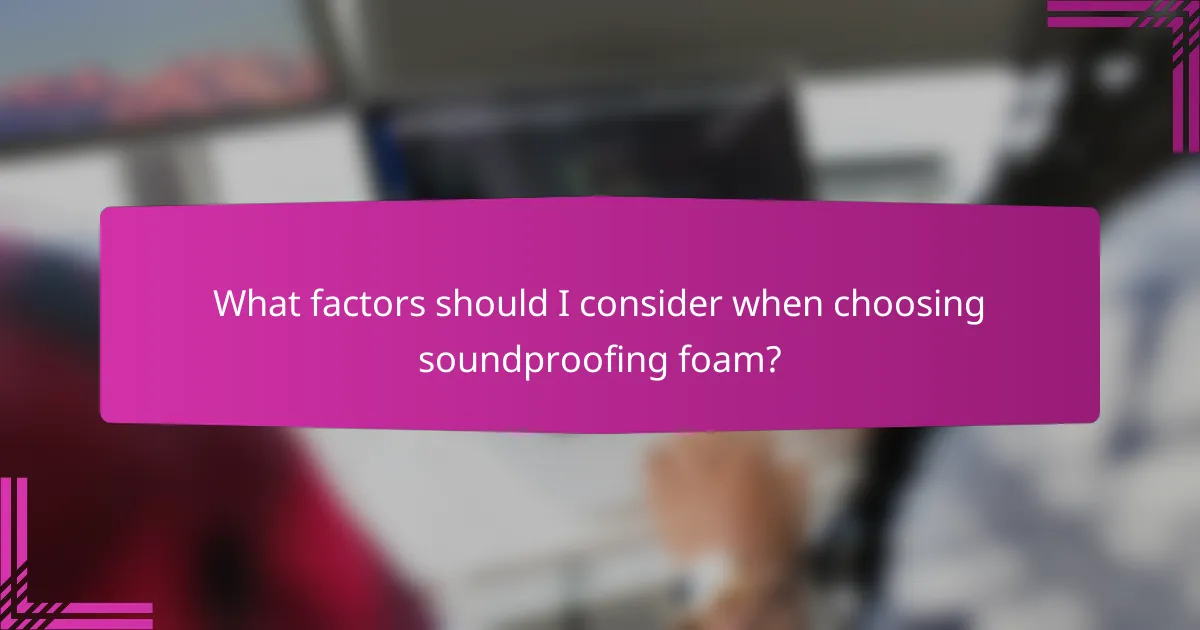
What factors should I consider when choosing soundproofing foam?
When selecting soundproofing foam, consider factors such as density, thickness, installation method, and fire safety ratings. These elements significantly affect the foam’s effectiveness, ease of use, and compliance with safety standards.
Density and thickness
The density and thickness of soundproofing foam play crucial roles in its sound absorption capabilities. Generally, denser foam provides better sound insulation, while thicker foam can block lower frequencies more effectively. Look for foam with a density of at least 30 kg/m³ and a thickness of 2.5 to 10 cm for optimal performance.
Keep in mind that thicker foam may require more space, which can be a consideration in smaller apartments. Balancing thickness and density based on your specific soundproofing needs is essential.
Installation method
Installation methods for soundproofing foam can vary, impacting both convenience and effectiveness. Some foams come with adhesive backing for easy application, while others may require additional mounting hardware. Choose a method that suits your skill level and the layout of your space.
For renters, removable adhesive strips or hook-and-loop fasteners can be a great option, allowing you to install and remove foam without damaging walls. Always follow the manufacturer’s instructions for the best results.
Fire safety ratings
Fire safety ratings are critical when choosing soundproofing foam, especially in residential settings. Look for products that meet standards such as ASTM E84, which assesses flame spread and smoke development. Foams with a Class A rating are the safest choice for indoor use.
Ensure that the foam you select is compliant with local fire safety regulations, as this can vary by region. Prioritizing fire safety not only protects your living space but also provides peace of mind.
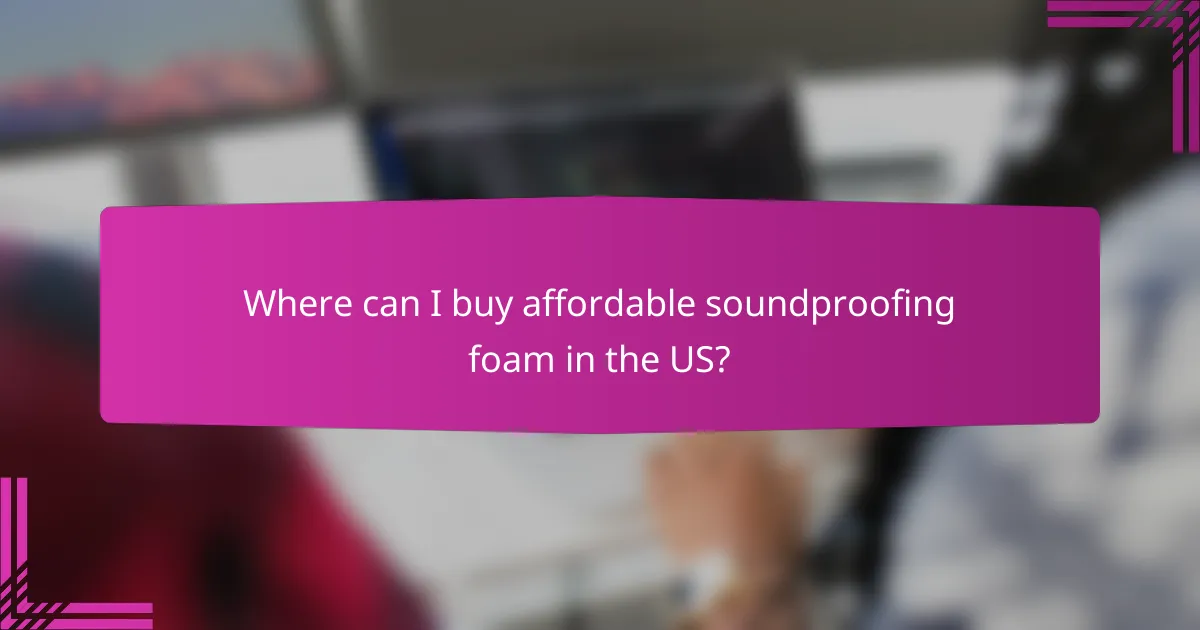
Where can I buy affordable soundproofing foam in the US?
You can find budget-friendly soundproofing foam at various retailers across the United States. Popular options include online platforms and local home improvement stores, which offer a range of products to suit different needs and budgets.
Amazon
Amazon is a leading online marketplace where you can find a wide selection of soundproofing foam at competitive prices. You can browse through various brands, read customer reviews, and often find deals that make it easy to compare options.
When shopping on Amazon, consider looking for foam panels that come in different thicknesses and sizes to match your specific soundproofing needs. Many products also offer free shipping if you meet a minimum order requirement, which can further reduce costs.
Home Depot
Home Depot is a well-known home improvement retailer that stocks soundproofing foam in-store and online. Their selection typically includes various types of acoustic panels and insulation materials suitable for apartments.
Visiting a Home Depot allows you to physically inspect the foam before purchasing, ensuring you choose the right density and texture. Additionally, their staff can provide advice on installation techniques and product suitability for your space.
Walmart
Walmart offers affordable soundproofing foam options both in-store and through their website. Their inventory often includes budget-friendly acoustic panels that can help reduce noise in your living space without breaking the bank.
Shopping at Walmart can be convenient due to their extensive network of locations, making it easy to pick up your soundproofing materials. Keep an eye out for seasonal sales or rollbacks, which can further enhance your savings.
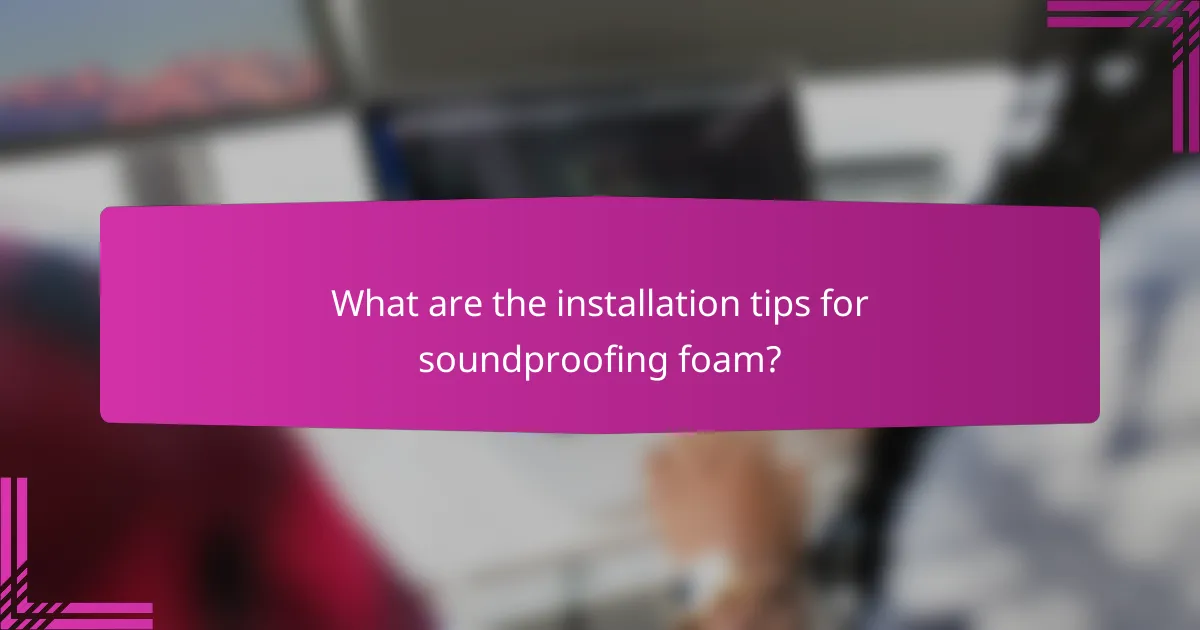
What are the installation tips for soundproofing foam?
To effectively install soundproofing foam, focus on proper adhesion and layout. These steps ensure maximum sound absorption and aesthetic appeal in your apartment.
Use adhesive spray
Adhesive spray is a practical choice for securing soundproofing foam to walls. It provides a strong bond and allows for easy application without damaging the surface underneath.
When using adhesive spray, ensure the wall surface is clean and dry. Apply the spray evenly to both the foam and the wall for optimal adhesion. Be mindful of the drying time, which typically ranges from a few minutes to an hour, depending on the product.
Follow a layout pattern
Establishing a layout pattern before installation helps maximize soundproofing effectiveness. Consider using a staggered or grid pattern to cover the wall evenly, which can enhance sound absorption.
Measure the wall space and plan your layout accordingly. You might want to leave small gaps between foam panels to allow for air circulation, which can improve acoustic performance. A common approach is to cover about 25-50% of the wall surface for noticeable sound reduction.
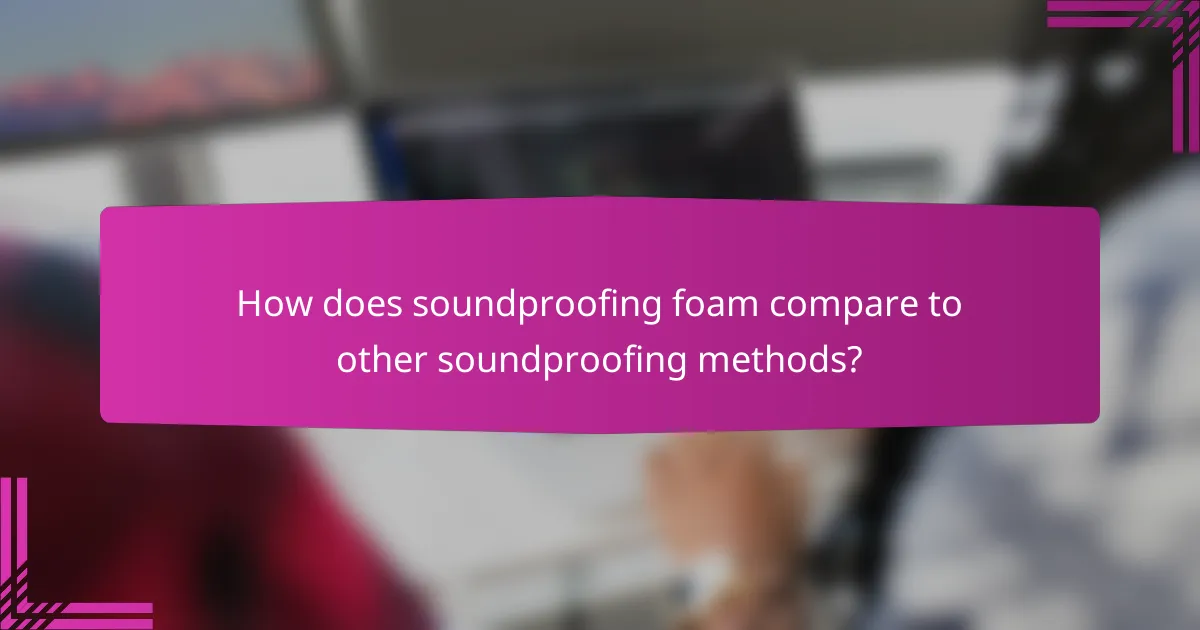
How does soundproofing foam compare to other soundproofing methods?
Soundproofing foam is a popular choice for reducing noise in apartments due to its affordability and ease of installation. Compared to other methods like drywall or acoustic panels, foam is generally less expensive and requires no professional installation.
Cost-effectiveness vs. drywall
Soundproofing foam is typically much cheaper than drywall, making it an attractive option for budget-conscious renters. While drywall can cost several dollars per square foot, soundproofing foam can be found for a fraction of that price, often in the range of $1 to $3 per square foot.
Additionally, installing foam is straightforward and can often be done without professional help, saving on labor costs. In contrast, drywall installation usually requires skilled labor, which can significantly increase overall expenses.
However, while foam is cost-effective, it may not provide the same level of sound insulation as drywall. For optimal soundproofing, consider combining foam with other materials or methods, especially in high-noise environments.
